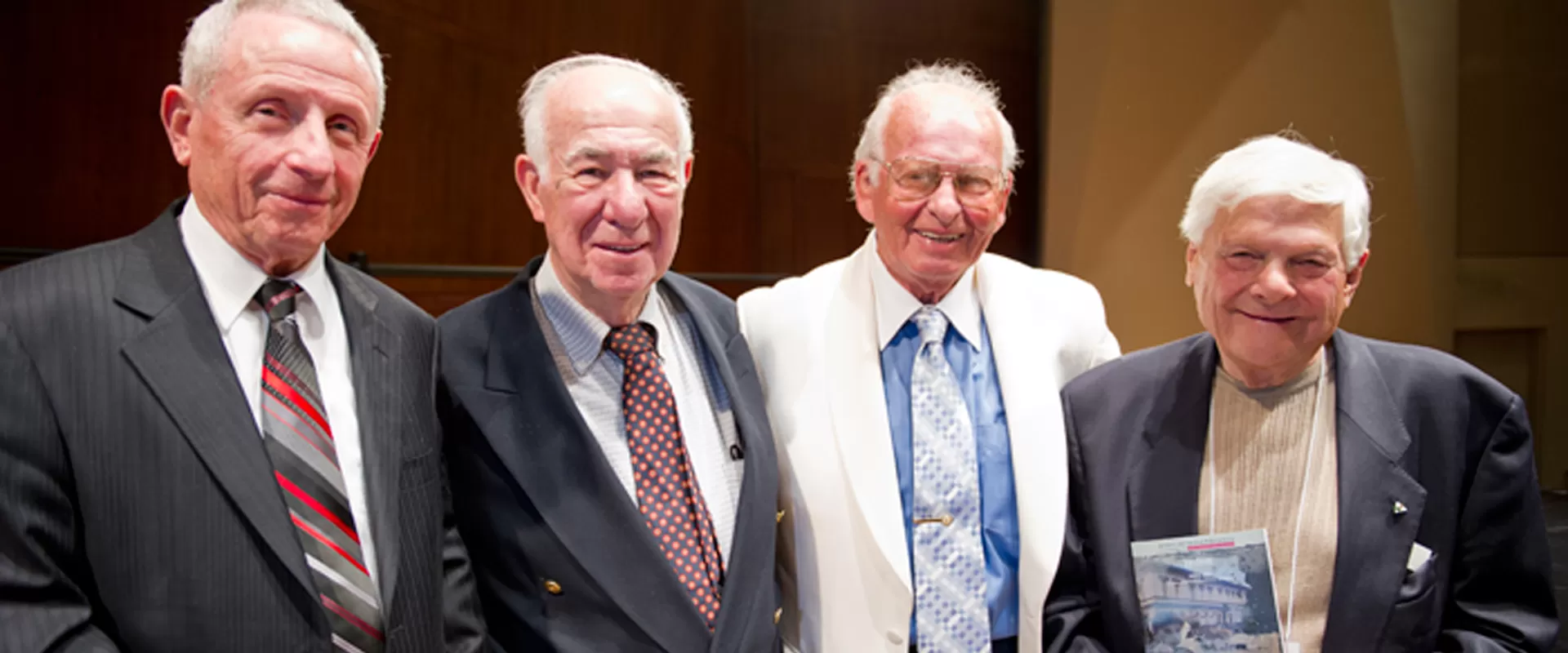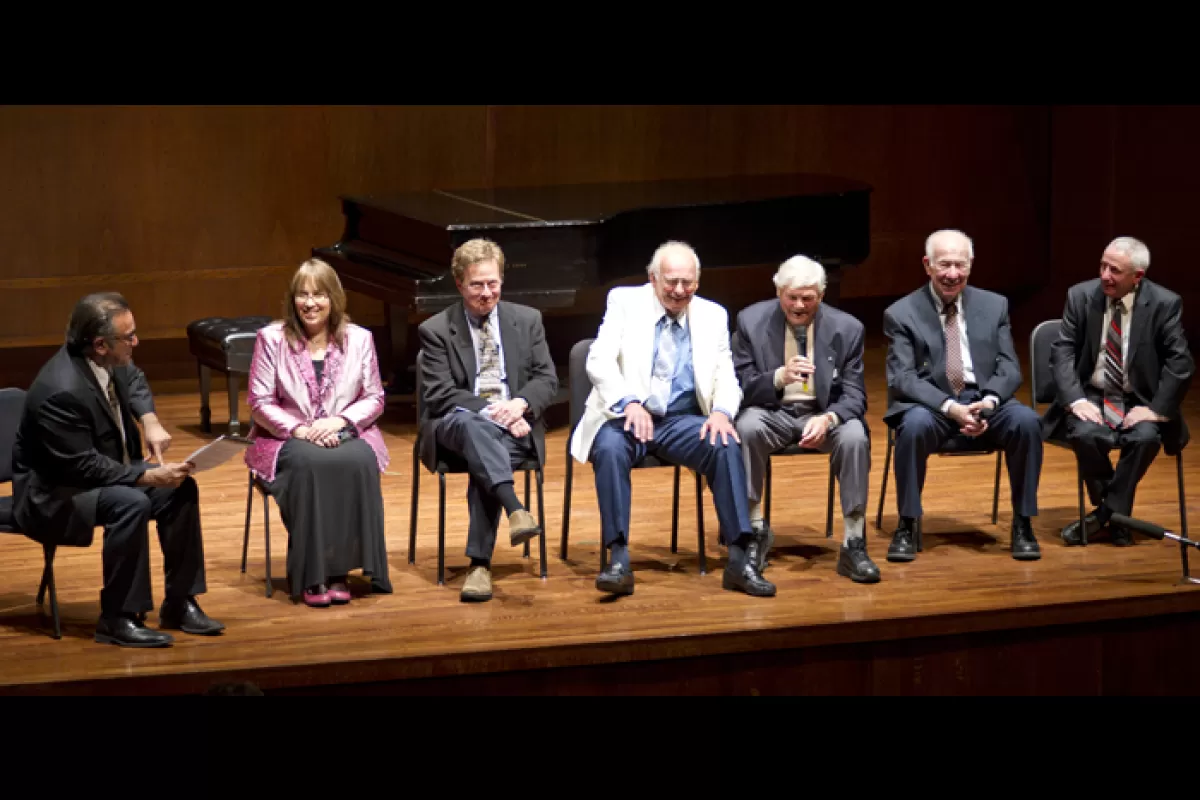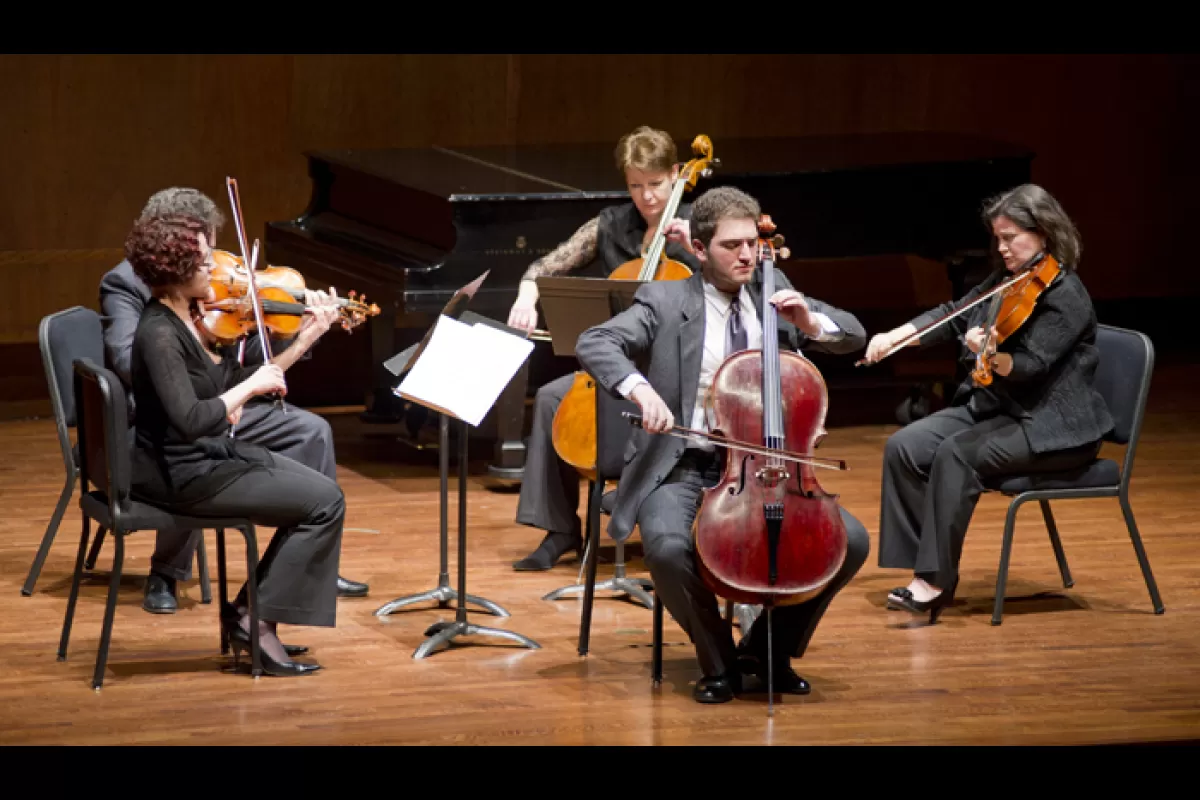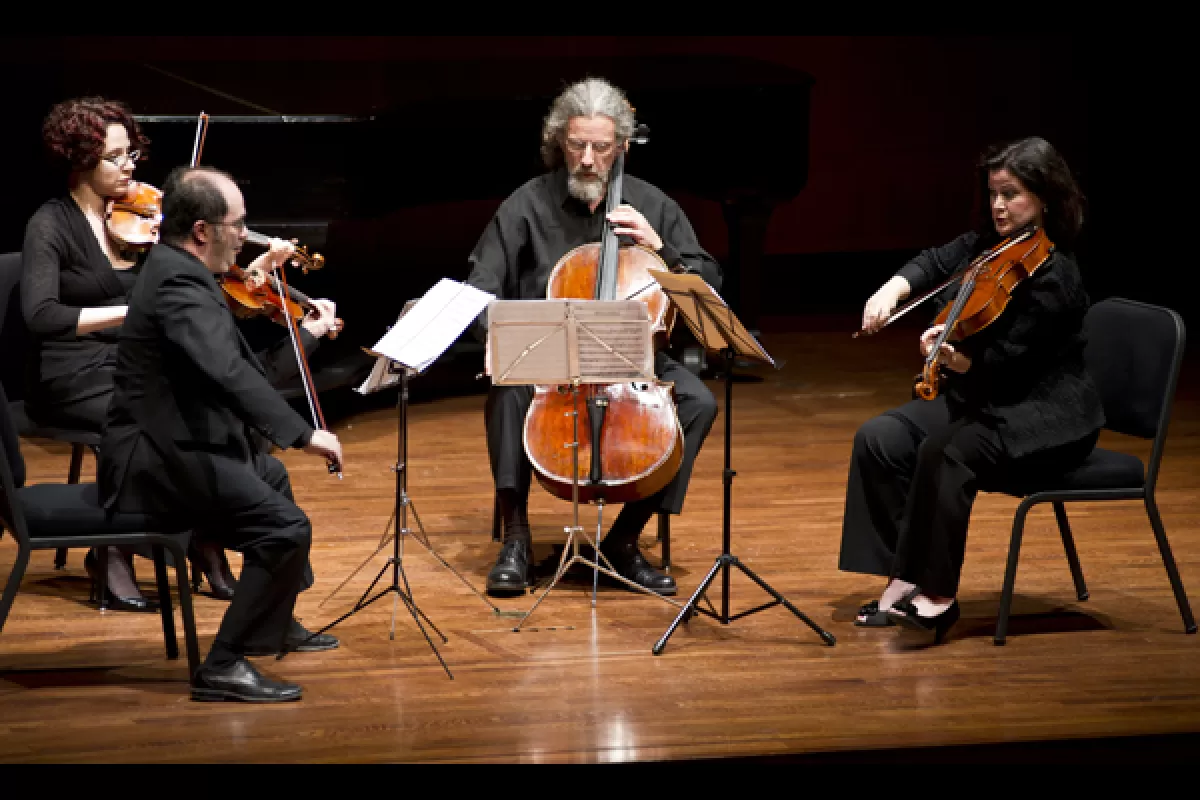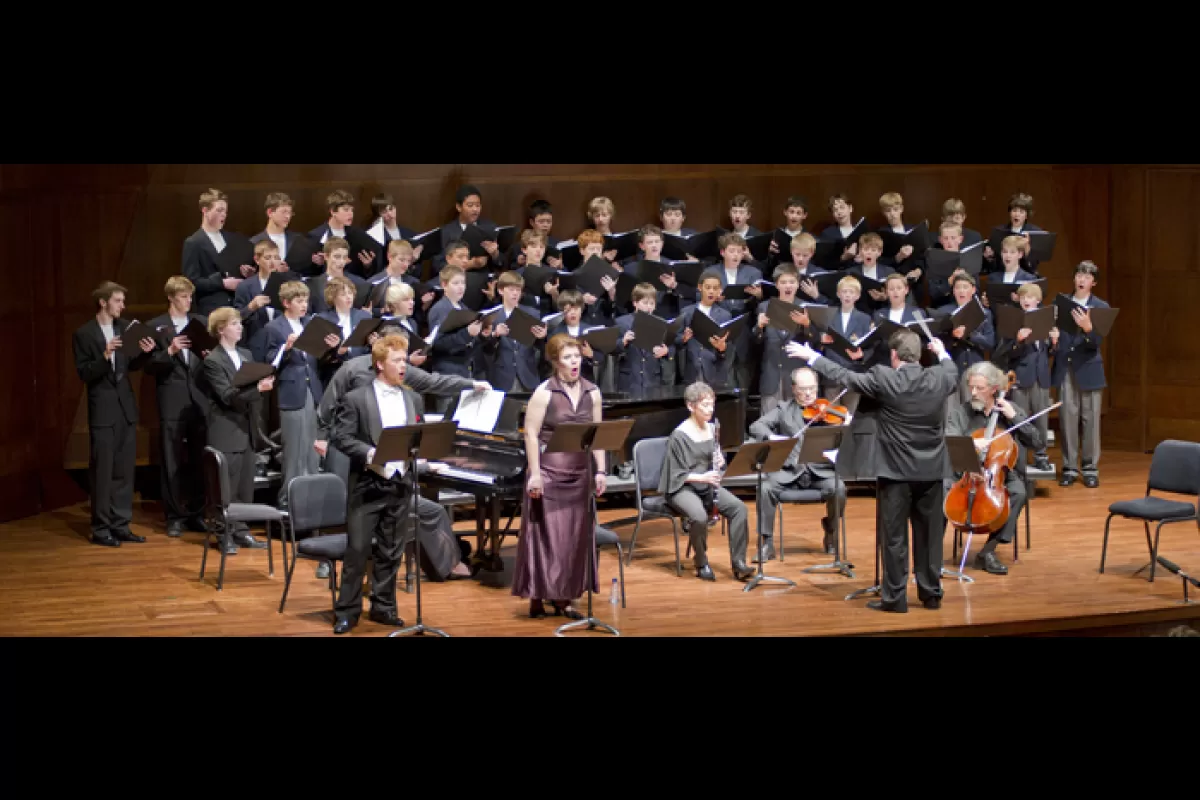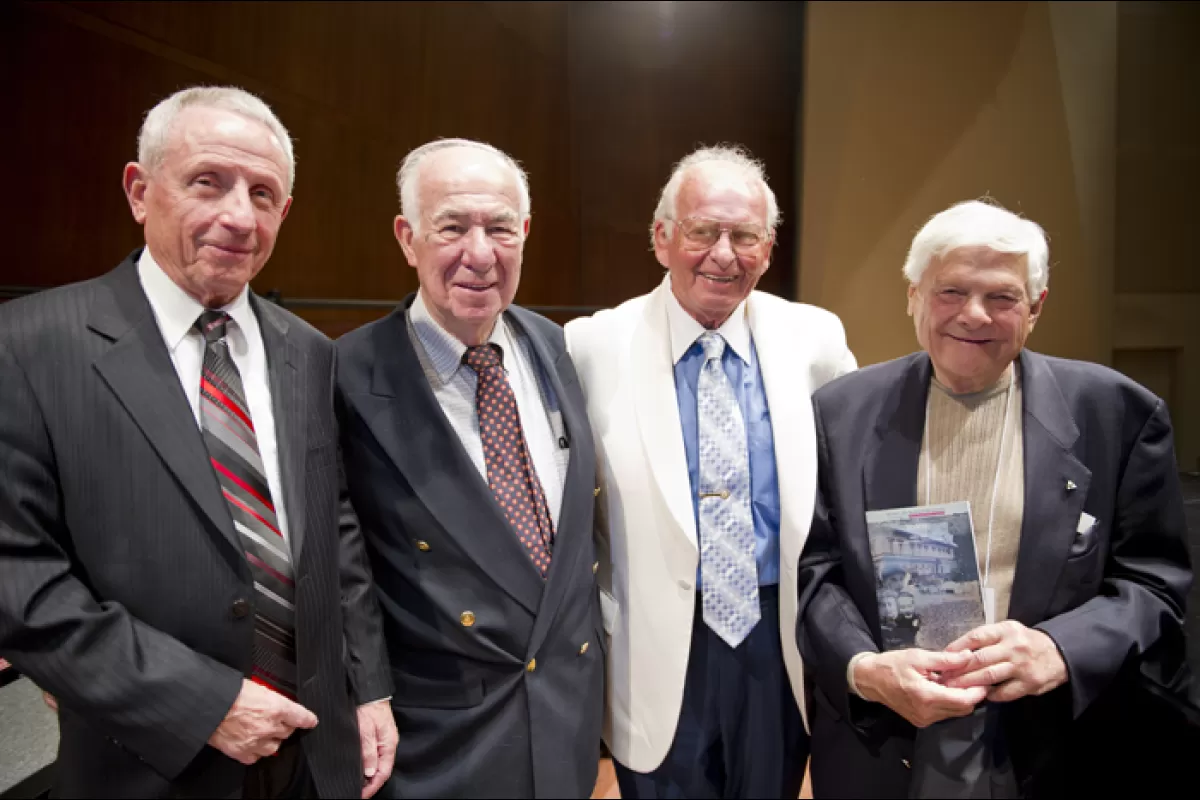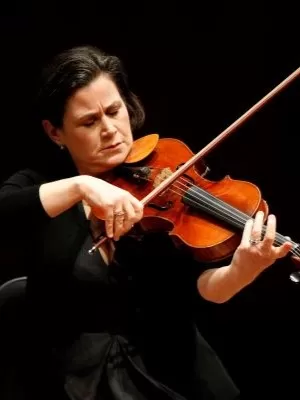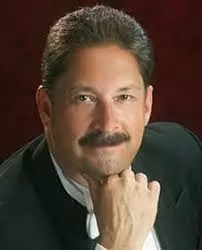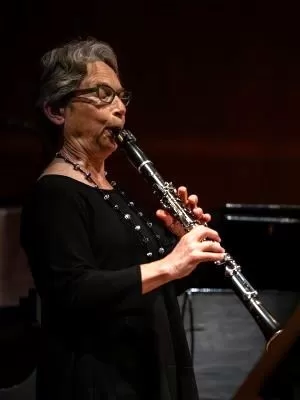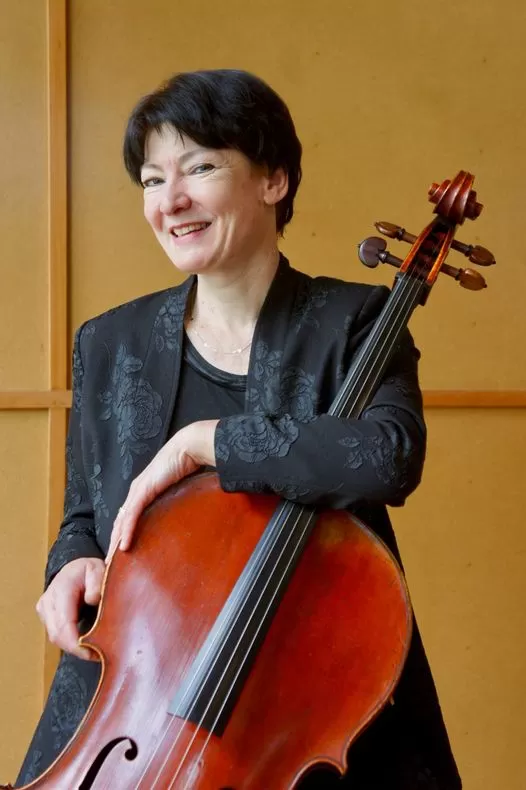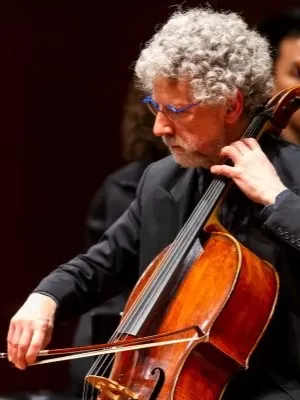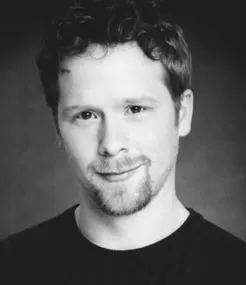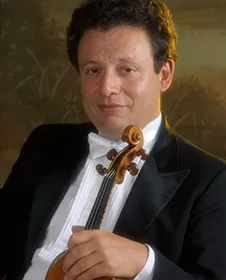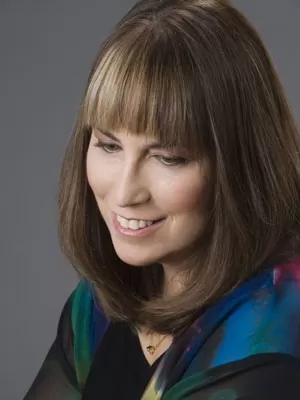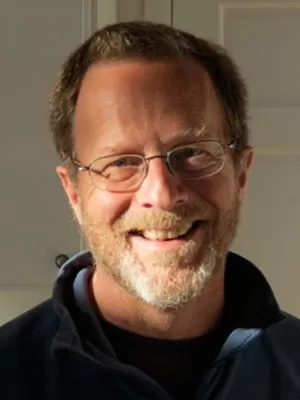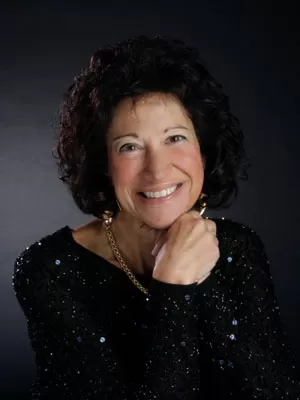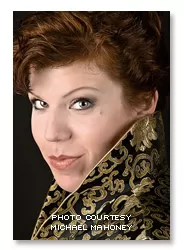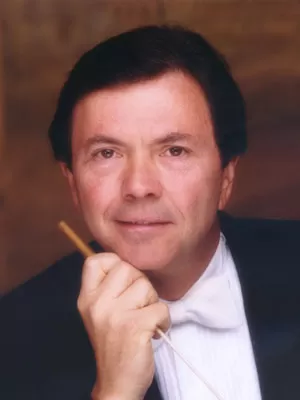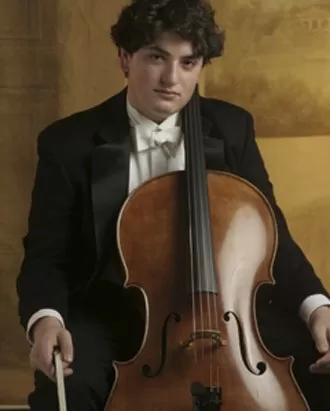May 10, 2010 - 12:00 pm
Our spring concert commemorated lives cut tragically short, and focused on the youth imprisoned at the Terezín concentration camp. Audience members had the privilege of attending the world premiere of MOR’s newest commission, Vedem. This Holocaust oratorio by award-winning composer Lori Laitman and poet/librettist David Mason tells the astonishing story of the boys at Terezín and their clandestine journal Vedem. The incomparable Northwest Boychoir, along with tenor Ross Hauck and mezzo-soprano Angela Niederloh, joined us to unveil this extraordinary work. The audience also heard Pavel Haas’ String Quartet No. 3 from 1938. Cellist Julian Schwarz returned to perform his father Gerard Schwarz’s soulful elegy, composed in memory of our dear friend and colleague David Tonkonogui.
Scenes from the World Premiere of Vedem
Gerard Schwarz
In Memoriam (2005)
Julian Schwarz, cello
Elisa Barston, violin Leonid Keylin, violin
Susan Gulkis Assadi, viola Mara Finkelstein, cello
Gerard Schwarz offers the following remarks:
In Memoriam is a work for solo cello and string orchestra (or string quartet), written in memory of a great musician and dear friend, David Tonkonogui. I was thrilled when my son Julian was chosen to be the first recipient of Music of Remembrance’s David Tonkonogui Memorial Award. David meant so much to all of us in our household and was such an inspirational teacher for Julian, fostering his passionate love of music. When Artistic Director Mina Miller and I were discussing what short work Julian would play as part of his prize for the mOR Spring Concert in May 2005, I suggested that perhaps I could write something. Mina embraced the idea, so during the end of March and beginning of April 2005, I wrote this work. In Memoriam is basically in three parts: the first section is funereal in spirit, reflecting the tragedy of death for someone so young, so gifted, and so remarkable. There is a consistent sadness and poignancy in this opening section. The middle section begins with the string quartet and then the material is repeated and embellished in the cello. I wanted this to be positive in feeling, thinking of all the great accomplishments of this wonderful man, individually and as a father and husband. It has a somewhat otherworldly quality but hopefully the experience is uplifting; a tribute to the extraordinary meaning that David Tonkonogui’s life had for all that knew him. Finally, the coda brings back a little part of the first section in a much shortened version, which is also much thinner texturally, to end on a single note—the lowest or purest note on the cello.
Pavel Haas
String Quartet No. 3 (1938)
Mikhail Shmidt, violin Elisa Barston, violin
Susan Gulkis Assadi, viola Walter Gray, cello
Pavel Haas was likely the most gifted student of Czech composer Leoš Janácěk. The son of a shoemaker, Haas did not begin his musical studies until his early teens, attending the music school of his hometown’s Philharmonic Society. After three years of army service, he joined the Conservatory and graduated to Janácěk’s master class, becoming a star pupil. Over two productive decades, Haas would work on over fifty compositions, but he gave opus numbers to only eighteen. His varied oeuvre includes symphonic and choral works, lieder, chamber music, scores for cinema and theatre, and an opera. Haas’ mature compositional voice combined a Stravinsky-like neo-Classicism with jazz, Czech folk themes, and Jewish synagogue music. Haas composed his third string quartet between October 1937 and summer 1938, and the work reflects that year’s tumultuously changing European landscape. Haas completed the first movement during relative happy times, borrowing folkloric themes from his opera Šarlatán (Charlatan), a recent success. When he returned to the quartet in 1938 after recovering from a serious illness, Nazi Germany had already annexed Austria, and Nazi threats to Czechoslovakia had become increasingly direct. The second and third movements have been seen as a premonition of the destruction that would soon engulf the Czech nation, all of Europe, and especially the Jewish people. The meditative middle movement is reminiscent of the St. Wenceslas chorale, and also suggests Jewish melodies. The triumphal con moto finale— with a series of variations that gather into a powerful fugue—might reflect the momentary euphoria that followed the summer’s enthusiastic parade and rally of a Czech patriotic movement.
Less than a year after completing the quartet, Haas saw Prague occupied by Nazi Germany. Haas was deported in 1941 to Terezín, where he joined fellow Czech-Jewish composers Viktor Ullmann, Gideon Klein, and Hans Krása. It was Klein who gave Haas music paper and encouraged him to compose to resist the depression that threatened to overwhelm him. Haas went on to write eight pieces while at Terezín. Knowing his likely fate, Haas had saved his non-Jewish wife and their daughter by divorcing. He was sent to his death at Auschwitz in October 1944. Haas’ third quartet was never performed in his lifetime.
Lori Laitman
Vedem (2010)
Libretto by David Mason
World Premiere!
A Holocaust Oratorio Commissioned by Music of Remembrance
Ross Hauck, tenor Angela Niederloh, mezzo soprano
Mikhail Shmidt, violin Laura DeLuca, clarinet Walter Gray, cello Mina Miller, piano
The Northwest Boychoir, Joseph Crnko, conductor
